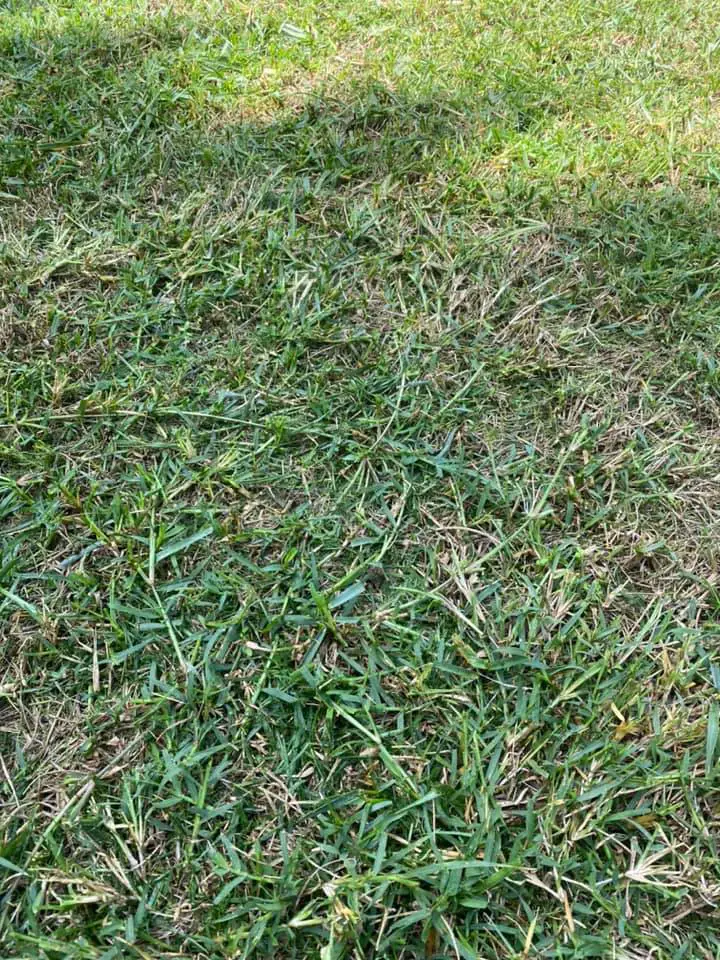Understanding the difference between rhizomes and stolons is important to know how plants and some cool and warm season grasses propagate and spread. Bermuda grass, St. Augustine grass, zoysia grass, and centipede grass all spread as they grow, filling in bare spots and developing into a lush lawn. Stolons and rhizomes are crucial for vegetative propagation, but not all plants have stolons and rhizomes. Of course, then there are tillers; what are these? Here, we’ll explore these three types of branches produced by cool and warm-season grasses. Once you understand tillers, stolons, and rhizomes, you’ll be better able to identify, support, or control the plants and grasses growing on your landscape. Use the following information for your upcoming lawn project.
Table of Contents
What’s the Difference Between Rhizomes and Stolons?
Although tillers, rhizomes, and stolons are branching parts of plants that include cool and warm season grasses, they each function differently in order to propagate and spread. The chief difference between stolons and rhizomes is that stolons are shoots of stems that creep or run along the surface of the soil. Rhizomes grow, on the other hand, underneath the soil’s surface. Both of these plant structures give rise to new plants such as Bermuda grass, zoysia grass, and creeping bentgrass.
Similarities Between Stolons and Rhizomes
Stolons and rhizomes also share similarities. Both of these plant structures are involved in vegetative reproduction; that is, they help to propagate and spread the plant. Both are produced from an existing stem of the plant.
What Are Rhizomes?
Rhizomes, also referred to as creeping rootstalks or rootstalks are modified parts of the stem. Rhizome grows horizontally under the ground and from them, new roots shoot into the soil, producing stems that will appear above ground, propagating and spreading the grass. Both Bermuda grass and zoysia grass have rhizomes. Some grasses such as Bermuda grass have both rhizomes and stolons.
What Are Stolons?
Stolons are above-ground stems that creep or run along the soil surface. They ‘run away’ from the main plant to shoot stems upwards, forming new plants. Each new plant will develop and, eventually, produce its own stolons, which is how many creeping grasses propagate. The independent plant will mature and help spread the grass, such as St. Augustine grass, or an invasive species of creeping grass. Centipede grass is an example of a stoloniferous grass. Other warm-season grasses that produce stolons include St. Augustine grass and Bermuda grass. A spider plant is a type of plant that produces stolons.
What Are Tillers?
Tillers are branches of grass that appear above ground. All grass plants produce tillers from their main stem or other tillers. A tiller is formed after the parent grass shoot develops from a seed. Tillers grow from leaf axils or other tillers produced by grass plants like centipede grass.
Stolons and Rhizomes FAQs
What are examples of a rhizome and stolon?
Many grass plants and creeping grasses propagate via their rhizomes or stolons. Some plants even produce both stolons and rhizomes.
What is the main difference between rhizomes and runners?
Rhizomes are root-like stems (underground stem) that grow below the surface of the soil and produce new plants. Rhizomes grow horizontally beneath the soil’s surface. Stolons, also called runners, are modified stems or an above-ground stem that grow (and creep) above the soil’s surface.
What grasses have stolons and rhizomes?
Some plants have both stolons and rhizomes. These plants include Bermuda grass and zoysia grass. An example of rhizomatous grass is Bermuda grass, zoysia grass, and Kentucky bluegrass.
What is the difference between rhizomes and stolons?
Rhizomes run from the main stem of a plant below the surface of the soil. They form roots below ground that produce shoots that grow into new plants above ground. The daughter plant will then develop its own underground rhizomes to form new shoots. Stolons run along the top of the soil. These modified stems root at various points to the soil and produce new plants. The major difference between stolons and rhizomes is that stolons grow above ground, and rhizomes grow below the ground’s surface.

